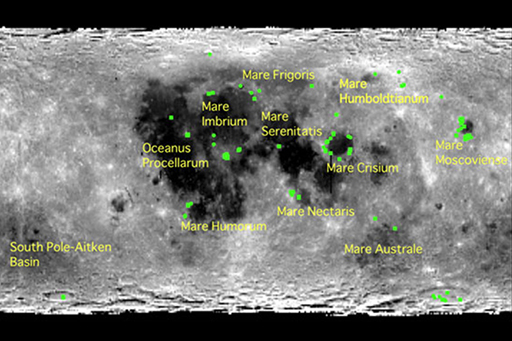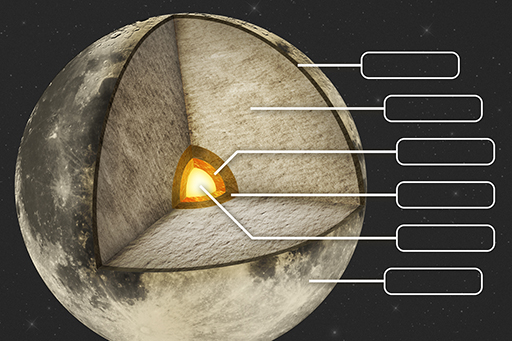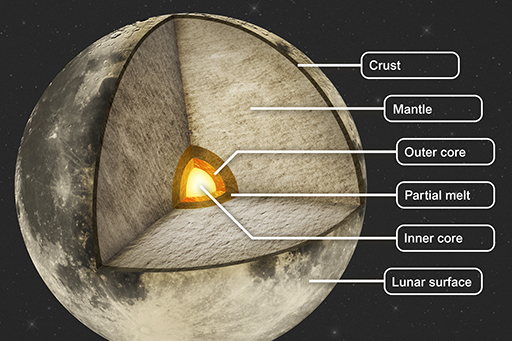1.5 Lunar mantle fragments at the surface
The SELENE mission was a Japanese lunar orbiter, launched 14 September 2007. The scientific objectives included obtaining information about the chemical composition of the lunar surface and studying the formation and geological evolution of the Moon. You will learn more about the SELENE mission next week.
The spacecraft measured the reflectance spectra of the lunar surface over a broad range of wavelengths and with a spatial resolution of around 500 m, in order to map the global distribution of the mineral olivine. The magma ocean hypothesis predicts that the mineral olivine should dominate the upper mantle and therefore should not be common in the lunar highlands. However, 34 olivine-rich sites were identified and all were concentrated around large impact basins located in thinner parts of the lunar crust. The presence of olivine is believed to be a result of exhumation of upper mantle material during large impacts, suggesting that olivine does occur in the upper mantle. No olivine was found in the thicker highlands crust.

Activity _unit6.2.1 Activity 1 Test your knowledge on the structure of the Moon

Try to work out which layer each empty label refers to.
When you’re ready, select ‘Reveal answer’ to see a fully labelled version.
Choose from these options:
- inner core
- outer core
- mantle
- lunar surface
- partial melt
- crust.
Answer

See also:
- Chang’e 4 landing [Tip: hold Ctrl and click a link to open it in a new tab. (Hide tip)] The China National Space Agency landed its Chang’e 4 probe on the far side of the Moon on 3 Jan 2019. This is the first ever far side landing. The landing site is in the South Pole Aitken basin, and there is a chance that Chang’e 4’s rover (Yutu 2) may find fragments of mantle. Read David Rothery’s article here.
- Misleading red colour in the first Chang’e 4 images A demonstration of why the early colour images from Chang’e 4 showed the lunar surface looking too red (later images from the science cameras were correct).
